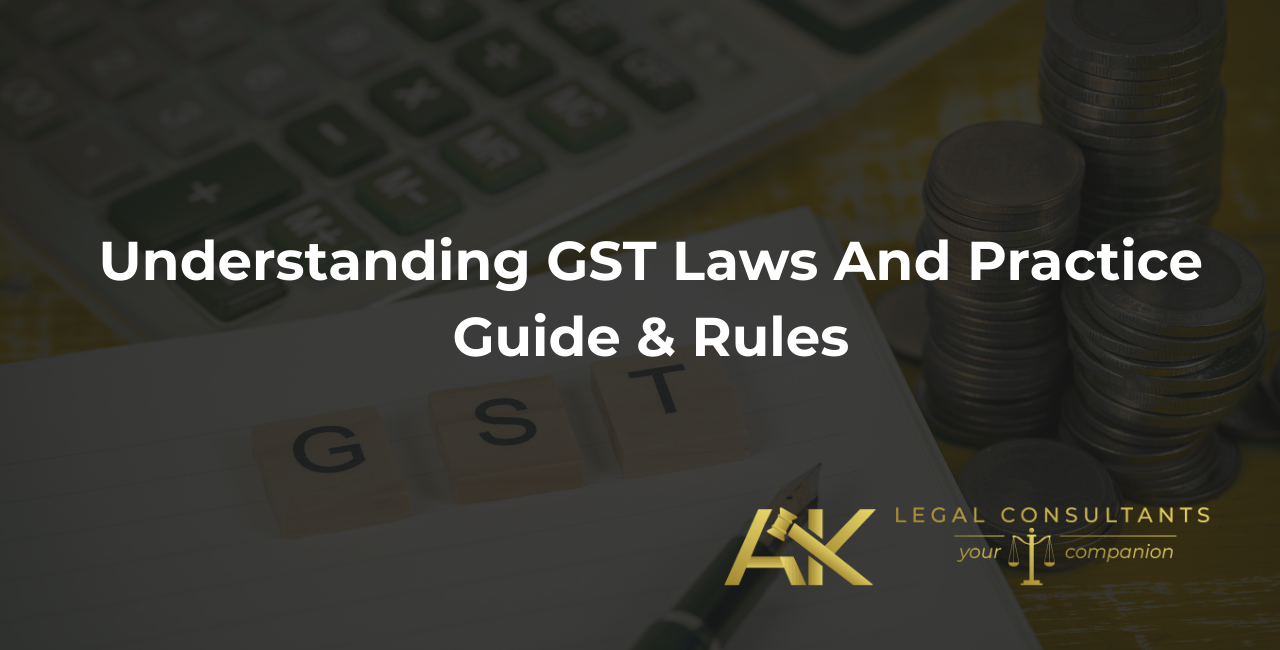Understanding GST laws and practice acts as a guide for Indian businesses to make rules and regulations has been followed properly. The Goods and Services Tax was implemented in India on July 1, 2017, as a landmark reform in the taxation system. It aimed to simplify the indirect taxation process by replacing multiple taxes such as VAT, service tax, and excise duty with a single unified tax.
For Indian businesses GST becomes crucial for compliance and smooth operations. Whether you’re a startup or a well-established business, Good & Service tax laws impact every aspect of your financial management. This guide provides an overview and their implications for businesses.
What is GST?
The Goods and Services Tax is an indirect tax levied on the supply of goods and services. It is a destination-based tax, meaning that it is collected at the point of consumption rather than at the origin. GST law for Indian businesses is a multi-stage, comprehensive tax applied at every step of the production and distribution process but refunded to all parties in the chain except the final consumer.
Under the GST laws for India, the tax is divided into three categories:
- CGST (Central GST): Collected by the central government on intra-state sales.
- SGST (State GST): Collected by the state government on intra-state sales.
- IGST (Integrated GST): Collected by the central government on inter-state sales and imports.
Why GST Matters for Businesses?
Understanding the impact of GST laws for Indian businesses is essential because it affects how businesses operate in terms of pricing, profit margins, and compliance. Non-compliance can lead to penalties and affect a business’s reputation. Below are some key areas that plays a critical role in business operations:
- Input Tax Credit (ITC): GST laws for India allow businesses to claim Input Tax Credit (ITC) on purchases, reducing the tax burden. This makes it crucial for businesses to maintain proper documentation of their purchases and sales to maximize tax credit benefits.
- Simplification of Tax Structure: Before GST laws for India, businesses had to deal with multiple taxes such as excise duty, VAT, and service tax. Now, under GST law, a unified tax system has been introduced, reducing the complexity of managing various indirect taxes.
- Transparency and Accountability: The implementation of GST laws for Indian businesses has enhanced transparency in the taxation system. All transactions are recorded digitally, leaving little room for manipulation. This new tax reformation ensures that every business owner is accountable for tax compliance, with a proper audit trail available.
- Boost to E-commerce: E-commerce businesses have benefited from GST laws, since it has eliminated the barriers between states. Now, businesses can easily sell their products or services across state borders without worrying about multiple taxation systems.
GST Registration: Who is Liable?
Any business with an annual turnover of over ₹40 lakh (₹20 lakh for services in special category states) is required to register under GST laws for India. This process is mandatory for businesses to charge and collect Good & Service Tax from customers. Failure to register can result in heavy penalties
Who needs to register under GST?
- Businesses with annual turnover exceeding ₹40 lakh (₹20 lakh for services in certain states).
- E-commerce operators.
- Input service distributors.
- Non-resident taxable persons.
- Casual taxable persons.
Types of GST Returns
Indian businesses are required to file different types of returns based on their turnover and nature of their business. The various forms for filing returns include:
- GSTR-1: For reporting outward supplies of goods and services.
- GSTR-3B: A simplified return for monthly summary of outward and inward supplies.
- GSTR-4: For composition scheme taxpayers who pay a fixed tax rate based on their turnover.
- GSTR-9: The annual return, which consolidates the data from all GSTR-1 and GSTR-3B forms.
GST Compliance: Important Deadlines and Penalties
Timely compliance with GST laws for Indian businesses filing deadlines is crucial to avoid penalties. Under GST law, penalties are imposed for non-compliance, late filing, or errors in filing. A late fee of ₹50 per day is charged for regular taxpayers, and ₹20 per day for those under the composition scheme.
Businesses must also maintain detailed records of all invoices, credit notes, debit notes, and supply chain transactions. The audit ensures that these records are accurate and available for review.
GST and Startups
- Manufacturing Industry: The GST laws have positively impacted the manufacturing sector by reducing cascading taxes and simplifying the supply chain. Manufacturers can now claim Input Tax Credit (ITC) on raw materials, reducing overall production costs.
- Service Sector: Service sector have brought uniformity to the taxation of services. Earlier, service tax was levied at a different rate than goods. Now, the same tax rate applies to both goods and services, making it easier for service providers to comply with tax regulations.
- Real Estate: GST laws for real estate businesses have simplified the tax structure, eliminating multiple taxes like VAT, service tax, and excise duty. It also introduced anti-profiteering measures to ensure that benefits of reduced tax rates are passed on to home buyers.
GST Impact on Various Industries
For startups, understanding Good and Service Tax laws for Indian businesses is critical for compliance and financial planning. Proper registration ensures that startups can claim Input Tax Credit (ITC) on their purchases and services. This law also facilitate easier interstate trade, allowing startups to expand their market reach without worrying about different state taxation laws.
Conclusion
Navigating the complexities of GST laws for India can be challenging for businesses, especially for startups and small businesses. However, complying with the regulations and staying updated with the latest changes can help businesses operate smoothly, avoid penalties, and take full advantage of Input Tax Credit.
As a business owner, it’s essential to stay compliant with GST law for Indian businesses, ensure timely filing of returns, and maintain accurate records. Partnering with tax consultants or legal advisors can help your business stay on track and ensure full compliance.







